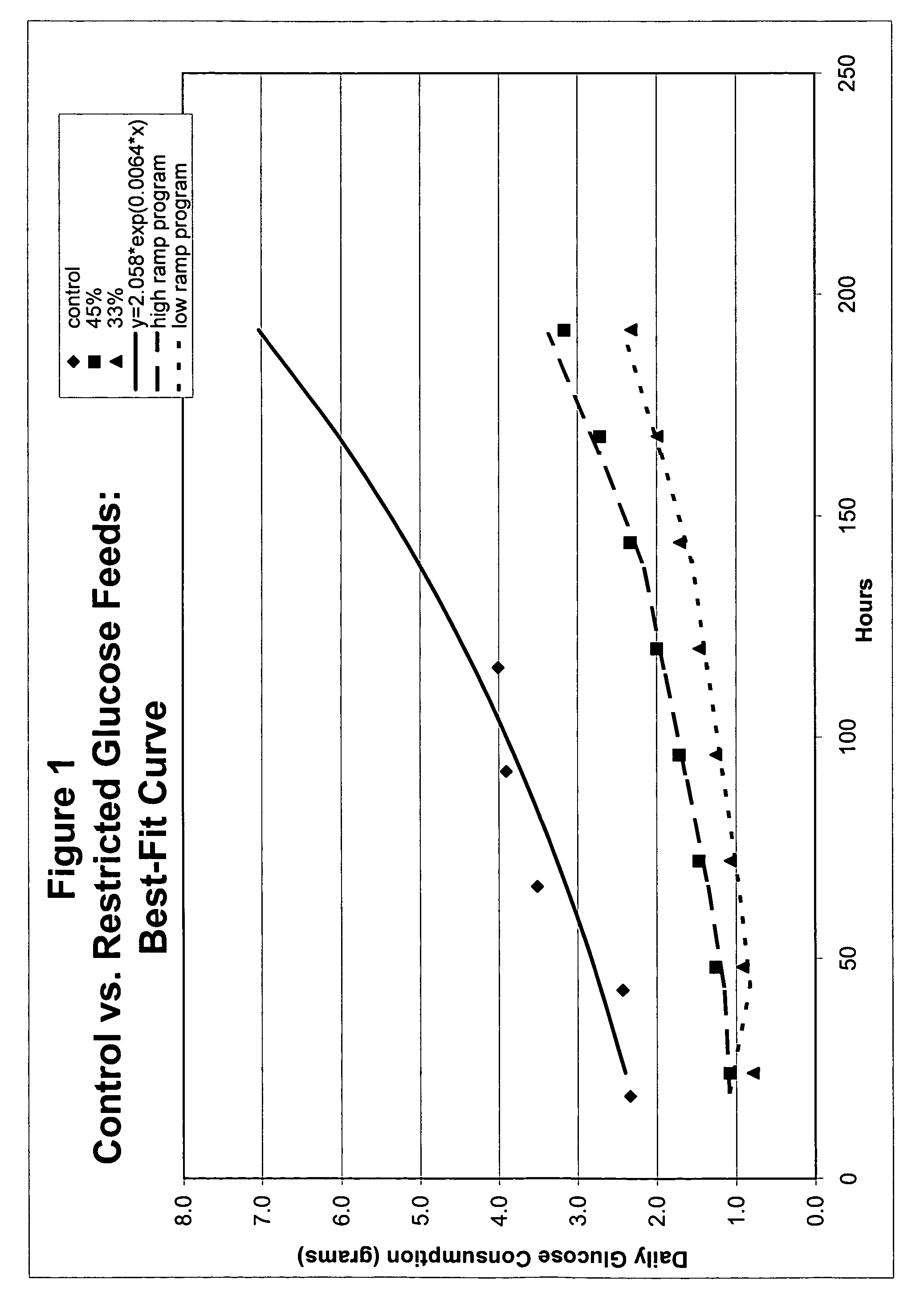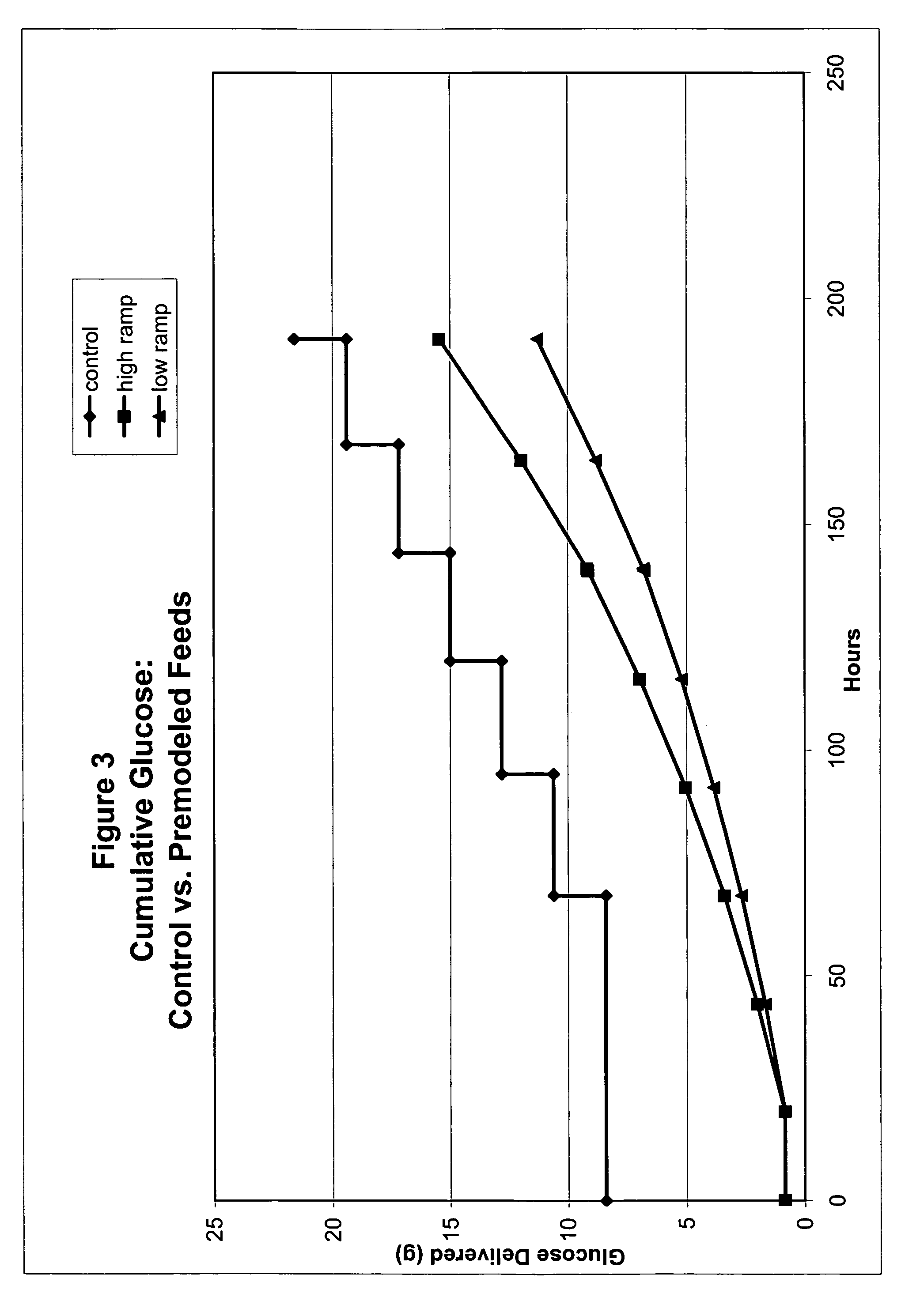Restricted glucose feed for animal cell culture
a technology which is applied in the field of restriction and glucose feed for animal cell culture, can solve the problems of low lactate production, excessive lactic acid production, and lower production rate of animal cell culture, and achieve the effect of increasing the production of recombinant proteins
- Summary
- Abstract
- Description
- Claims
- Application Information
AI Technical Summary
Benefits of technology
Problems solved by technology
Method used
Image
Examples
example 1
Media
Example 1.1
Inoculation Media
[0048]Base inoculation medium was formulated to include the same components as DMEM / F12 Medium, but with the following components being added: 200 mg / L dextran sulfate (U.S. Pat. No. 5,318,898 describes use of dextran sulfate in culture media), 10 mg / L Nucellin (a human insulin analog of recombinant DNA origin; Eli Lilly (Indianapolis, Ind.)), and 2.4 g / L polyvinyl alcohol (PVA). The base inoculation medium made for these experiments lacked glucose. For control inoculation medium, approximately 10 g / L glucose was added to the base inoculation medium prior to inoculation. For the inoculation medium used in glucose restricted-feed cultures, approximately 0.8 g / L glucose and 1.3 g / L NaCl were added to the base inoculation medium; the NaCl was added so that the starting osmolality of the inoculation medium used in glucose restricted-feed cultures was similar to the starting osmolality of the control inoculation medium.
example 1.2
Feed Media
[0049]Base feed medium was formulated to consist of the same components as DMEM / F12 Medium-base inoculation medium; the base feed medium formulated for these experiments lacked glucose. For control feed medium, about 44 g / L glucose was added to the base feed medium.
example 2
Setting Glucose Addition Rates
[0050]One approach to setting glucose addition rates for restricted-glucose feed cultures involved examining glucose consumption rates by CHO cells throughout a typical control fed-batch culture. Glucose concentration in a typical control culture began at a high level (e.g., about 10 g / L) and diminished steadily during normal exponential growth; glucose additions were made after Day 3. For these control cultures, glucose supplementation is needed to prevent glucose depletion (e.g., see glucose concentration profile for control culture in FIG. 9).
[0051]Glucose concentrations were determined for control cultures using sampling-based methods, wherein samples were taken at various points in time after inoculation, and the glucose concentrations of samples were determined. Samples were taken daily and were analyzed using the Bioprofile 100 Analyzer (Nova Biomedical Corp., Waltham, Mass.), which measures concentrations of glucose, lactate, glutamine, glutamat...
PUM
| Property | Measurement | Unit |
|---|---|---|
| concentrations | aaaaa | aaaaa |
| concentrations | aaaaa | aaaaa |
| concentration | aaaaa | aaaaa |
Abstract
Description
Claims
Application Information
 Login to View More
Login to View More - R&D
- Intellectual Property
- Life Sciences
- Materials
- Tech Scout
- Unparalleled Data Quality
- Higher Quality Content
- 60% Fewer Hallucinations
Browse by: Latest US Patents, China's latest patents, Technical Efficacy Thesaurus, Application Domain, Technology Topic, Popular Technical Reports.
© 2025 PatSnap. All rights reserved.Legal|Privacy policy|Modern Slavery Act Transparency Statement|Sitemap|About US| Contact US: help@patsnap.com



